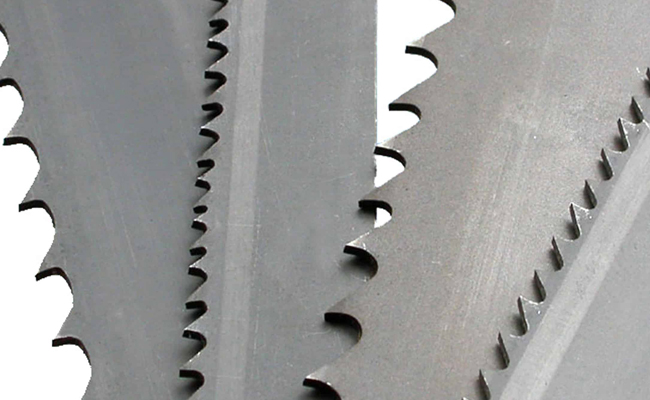CL4370HB horizontal band saw for mold steel(Servo cylinder)
Cutting Capacity :
High-precision band saw blade is an industrial saw blade used for precision cutting, which is widely used in metal processing, wood processing, aerospace, automobile manufacturing and other fields. It is characterized by high cutting accuracy, smooth cut and long service life, and is suitable for scenes with strict requirements on cutting quality. The following are key knowledge points about high-precision band saw blades:

1. Core features
High cutting accuracy: strict tolerance control (usually within ±0.1mm), high verticality of cut, and reduced demand for subsequent processing.
Smooth cutting surface: optimized saw tooth design reduces burrs and material deformation, especially suitable for thin-walled pipes or precision parts.
Strong durability: high-quality materials (such as high-speed steel, cemented carbide) and special heat treatment process are used to extend service life.
Low vibration/low noise: dynamic balance design reduces vibration during cutting and improves stability.
2. Main application areas
Metal processing: cutting high-hardness materials such as stainless steel, alloy steel, titanium alloy, etc.
Precision machinery: forming and cutting of precision parts such as gears, bearings, hydraulic components, etc.
Aerospace: titanium alloy blades, aluminum alloy frames and other key parts processing.
Medical devices: stainless steel bone bracket, fine cutting of surgical instruments.
3. Key selection parameters
Material matching:
Bimetallic band saw blade (high-speed steel teeth + spring steel back): cost-effective, suitable for most metals.
Carbide band saw blade: used to cut superhard materials such as nickel-based alloys and composite materials.
Tungsten carbide coating: enhance wear resistance, suitable for high-volume scenarios.
Tooth design:
Variable pitch (such as 3/4 variable teeth): reduce resonance, suitable for cutting special-shaped materials.
Fine teeth (such as 10-14 TPI): thin-walled tubes or small-section cutting.
Width/thickness: narrow saw blades (6-10mm) are suitable for curve cutting, and wide saw blades (20-34mm) improve straight-line cutting stability.
4. Precautions for use
Tension control: The tension needs to be adjusted according to the width of the saw blade (e.g., about 300-350 N/mm² for a 20mm wide saw blade).
Cutting parameters:
Feed speed: Hard metals require low speed (20-40 m/min), soft metals or wood can be high speed (80-120 m/min).
Cooling and lubrication: It is recommended to use cutting fluid for metal cutting to reduce thermal damage.
Regular maintenance: Clean sawdust and check guide block wear to avoid premature failure of the saw blade.
5. Common problems and solutions
Deflected cut: Check saw blade tension, guide arm alignment or saw tooth wear.
Broken teeth/fracture: May be caused by excessive feed pressure or unstable material clamping.
Short life: Confirm that the tooth shape matches the material to avoid improper speed/cooling.
6. Brand recommendation (internationally renowned)
LENOX (USA): Leading bimetallic saw blade technology, suitable for high-load processing.
AMADA (Japan): Carbide saw blades are extremely accurate and suitable for aerospace applications.
BIMETAL (Germany): Known for durability and stability.
If more specific selection recommendations are required (e.g. for a certain material or machine model), detailed requirements can be provided for further analysis.
Cutting Capacity :
Cutting Capacity :